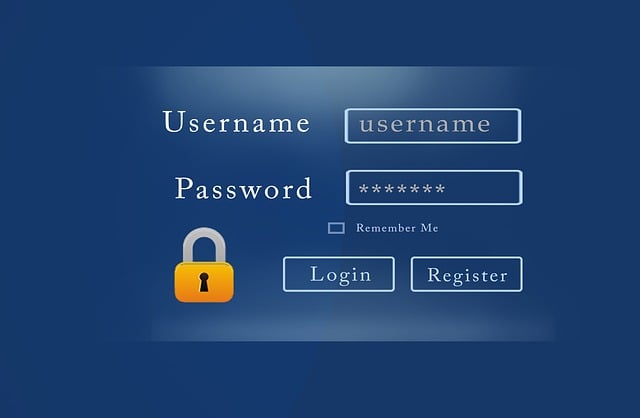Before registering a new car, review state DMV guidelines online for essential documents, fees, and considerations. Gather required papers, including proof of ownership, ID, insurance, and residency. Choose between in-person or online registration at the DMV to save time. Fill out forms accurately with vehicle details and personal information to avoid delays. Pay jurisdiction-specific fees online after verifying your purchase and vehicle info. Obtain license plates from the DMV either in person or online, following placement rules.
Navigating the New Car Registration Process: A Comprehensive Guide
Purchasing a new car is an exciting step, but it’s crucial to understand the administrative process that follows. Vehicle registration is more than just a formality; it’s a critical procedure to ensure you can legally hit the open road. This guide breaks down the essential steps to register your new vehicle efficiently. From gathering required documents to understanding automated DMV services, we’ll walk you through each stage, ensuring a smooth transition from showroom to street-legal status.
- Understand Your DMV Registration Requirements
- Gather Necessary Documents for Car Registration
- Visit Your Local DMV Office or Use Online Services
- Complete the DMV Registration Forms Accurately
- Pay the Vehicle Registration Fees
- Obtain Your License Plates and Drive Legally
Understand Your DMV Registration Requirements

Before diving into the registration process, it’s crucial to familiarize yourself with the specific requirements set by your state’s Department of Motor Vehicles (DMV). These regulations can vary widely, affecting everything from the documents you need to submit to the fees you must pay. Your DMV’s website is an excellent starting point; most offer detailed guides and checklists that outline what’s expected during registration. Common essentials include proof of identification, vehicle ownership (like a purchase agreement or loan paperwork), insurance coverage, and sometimes even proof of residency. Understanding these requirements beforehand can save significant time and frustration later on, ensuring the process goes smoothly.
Additionally, be aware of any special considerations for your vehicle type. For instance, registering a classic car or an imported vehicle might involve additional steps or documentation. Staying informed about these nuances ensures you’re prepared to provide all necessary information, making the registration experience less stressful and more efficient.
Gather Necessary Documents for Car Registration

Before you start the registration process, ensure you have all the required documents. This typically includes proof of vehicle ownership, such as a purchase agreement or bill of sale, and your driver’s license or state ID card. You’ll also need to present proof of insurance, which can be in the form of an insurance card or a certificate of insurance from your insurer. Additionally, have a valid registration plate (if provided by the dealer) and any applicable fees ready to avoid delays. It’s advisable to double-check with your local DMV for specific documentation requirements as they may vary based on location and vehicle type.
Organize these documents in advance to streamline the registration process. Many DMVs now offer online services, allowing you to upload or submit these documents electronically. Doing so can significantly reduce the time spent waiting in line and navigating paperwork during your visit to the DMV.
Visit Your Local DMV Office or Use Online Services

When purchasing a new car, one of the initial and crucial steps is to register your vehicle with the appropriate government agency, typically the Department of Motor Vehicles (DMV). You have two main options for completing this task: visiting your local DMV office in person or utilizing their online services.
Opting for in-person registration involves scheduling an appointment, gathering necessary documents like proof of purchase, insurance, and identification, then filling out registration forms while adhering to DMV guidelines. Online registration streamlines this process by allowing you to complete most steps digitally. From applying for a vehicle title to submitting required documents electronically, these services can significantly reduce time spent at the DMV.
Complete the DMV Registration Forms Accurately

When registering your new car at the DMV, accuracy is key. Fill out all required forms meticulously, ensuring every piece of information is correct and complete. This includes providing precise details about your vehicle, such as the make, model, year, and VIN (Vehicle Identification Number). Double-check your personal information too – names, addresses, and contact details must match those on file with the DMV exactly.
Any errors or omissions could lead to delays or even rejection of your registration, so take your time to review each form before submission. If you’re unsure about any part, don’t hesitate to ask a staff member for clarification. It’s better to be thorough and accurate from the start than to face headaches later due to mistakes in the paperwork.
Pay the Vehicle Registration Fees

When registering your new car, one of the essential steps is paying the required vehicle registration fees. These fees vary by jurisdiction and are typically based on factors like the type of vehicle, its weight, and the area in which you reside. The cost might include a one-time fee for initial registration, annual renewal fees, and sometimes additional charges for specific services or features. It’s crucial to understand these costs upfront to avoid any surprises during the registration process.
Many DMVs now offer online payment options, allowing you to pay your registration fees conveniently and often at a discounted rate compared to in-person payments. This digital approach not only saves time but also reduces the risk of errors or loss of cash. Always ensure you have the necessary documentation, such as proof of purchase, vehicle identification number (VIN), and any applicable tax documents, ready before initiating the payment process.
Obtain Your License Plates and Drive Legally

After acquiring your new car, one of the most crucial steps to ensure legal driving is obtaining license plates from your local Department of Motor Vehicles (DMV). This process typically involves visiting a DMV office or, with growing automation, even completing it online. Once you have your license plates, they must be securely attached to your vehicle—typically on the rear—for it to be driven legally on public roads.
Remember that each jurisdiction has its own regulations regarding vehicle registration and license plate placement. It’s essential to follow these guidelines precisely to avoid any legal issues. With automated systems in place, many DMVs now offer faster turnaround times for plate issuance, ensuring you can get back on the road promptly after purchasing your new car.
In today’s digital era, automating the car registration process at the DMV streamlines getting your new vehicle on the road. By understanding the requirements, gathering essential documents, completing forms accurately, paying fees, and obtaining license plates, you can efficiently navigate this essential task. Remember that proper registration ensures legal driving, so take a dive into these steps to ensure a smooth experience.



